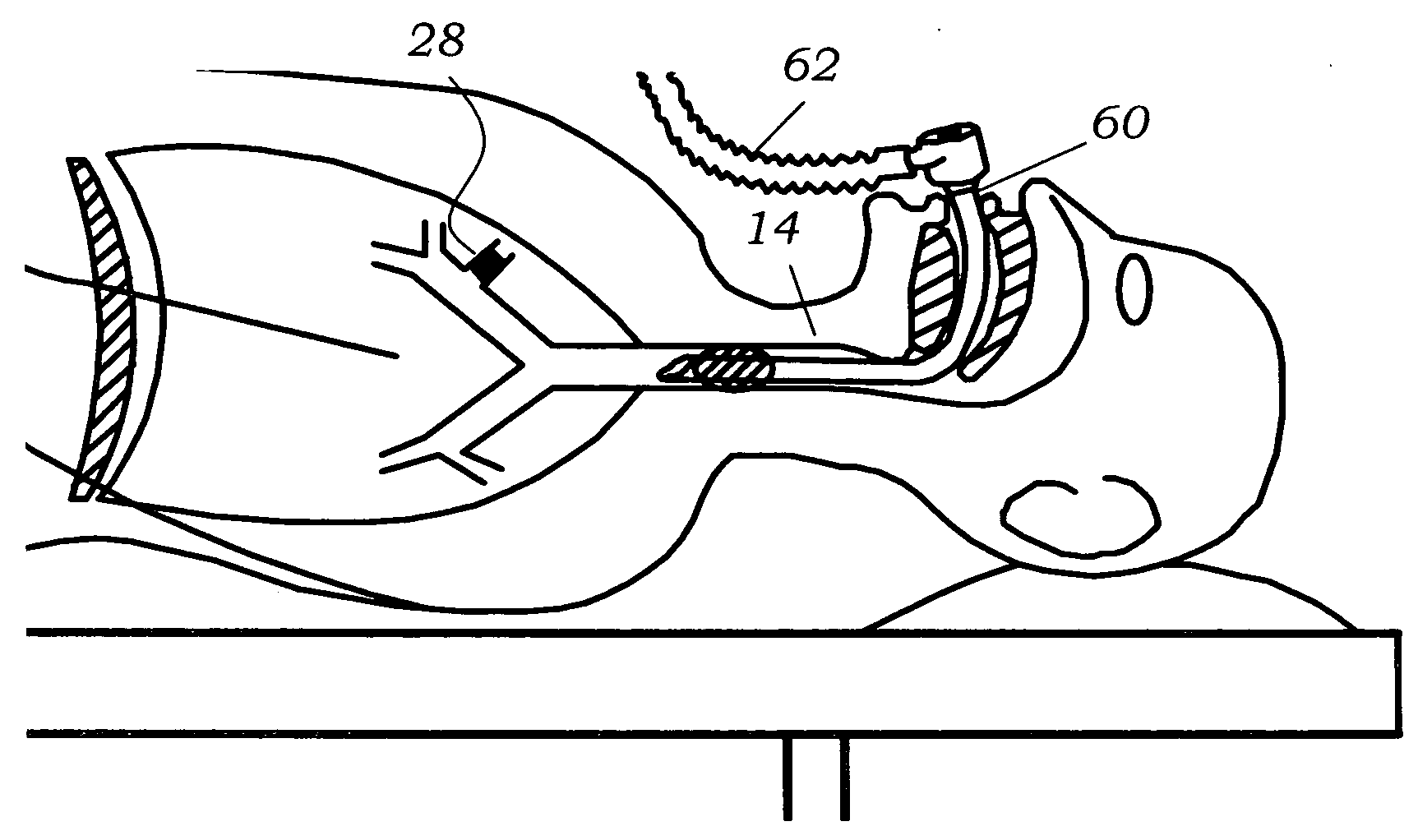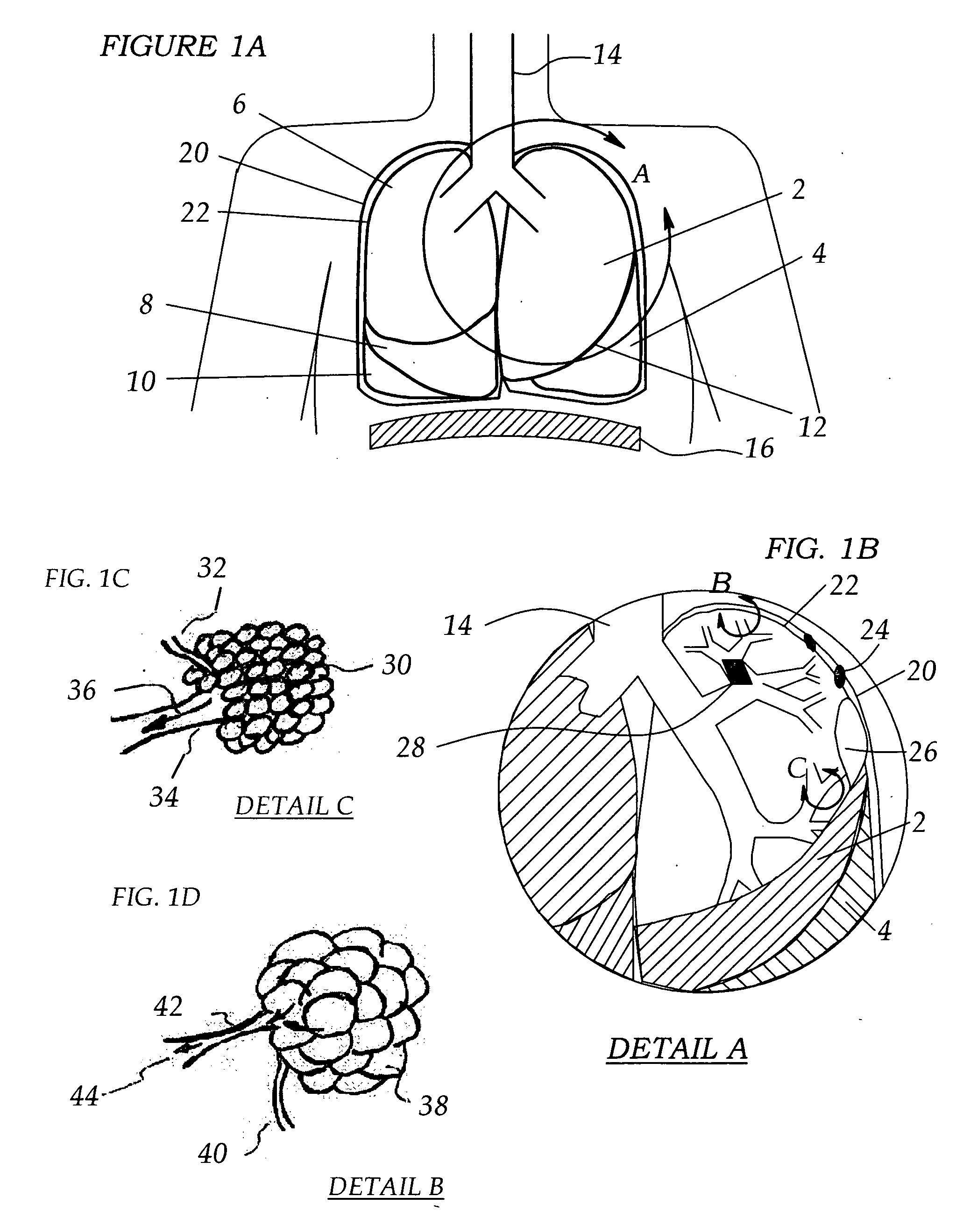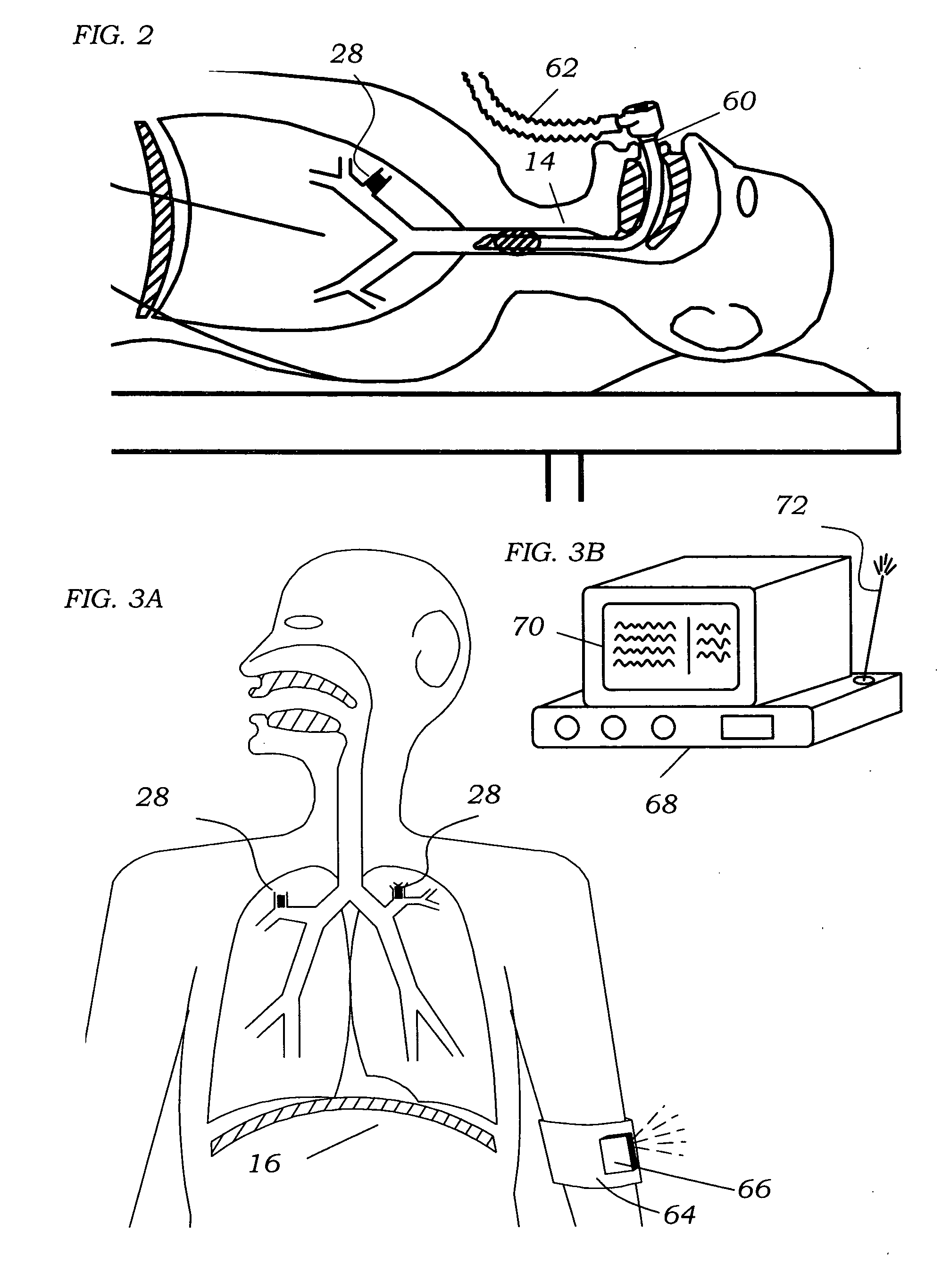Also due to elasticity loss, small conducting airways leading to the alveoli become flaccid and have a tendency to collapse during
exhalation,
trapping large volumes of air in the now enlarged air pockets, thus reducing bulk air flow exchange and causing CO2 retention in the
trapped air.
Mechanically, because of the large amount of
trapped air at the end of
exhalation (known as elevated
residual volume), the intercostal and diaphragmatic inspiratory muscles are forced into a pre-loaded condition, reducing their leverage at the onset of an inspiratory effort thus increasing work-of-
breathing and dyspnea.
These therapies all have certain disadvantages and limitations with regard to effectiveness, risk or availability.
Usually, after progressive decline in
lung function despite attempts at therapy, patients become physically incapacitated or sometimes require
mechanical ventilation to survive in which case
weaning from ventilator dependency is difficult.
This approach may slow down the progression of the
disease by blocking continued
elastin destruction, but a successful treatment is many years away, if ever.
However, these approaches are in very early stages of research, and will take many years before their viability is even known.
Approximately 8000 people have undergone LVRS, however the results are not always favorable.
There is a high
complication rate of about 20% (air leaks, infection), patients don't always feel a benefit (perhaps partly due to the indiscriminate nature of the resection), there is a high degree of surgical trauma, and it is difficult to predict which patients will feel a benefit.
All these methods typically ventilate
COPD patients more effectively, however the effect is only transient and they do not reduce the debilitating elevated
residual volume that exists with emphysema.
These methods are in-effective partly because they employ ventilation on the entire lung as a whole.
While this method may be less traumatic than LVRS it presents new problems.
First, it will be difficult to isolate a bronchopulmonary segment for suction into the sleeve.
Secondly the compliant sleeve will not be able to conform well enough to the contours of the chest wall therefore abrading the pleural lining as the lung moves during the
breathing, thus leading to other complications such as adhesions and pleural infections.
The main flaw with this method is that the gas will not effectively dissipate, even given weeks or months.
Rather, a substantial amount of trapped gas will remain in the blocked area and the area will be at heightened
infection risk due to mucous build up and migration of
aerobic bacteria.
Another
disadvantage with this invention is
adhesive delivery difficulty; Controlling
adhesive flow along with gravitational effects make delivery awkward and inaccurate.
Further, if the
adhesive is too hard it will be a tissue irritant and if the adhesive is too soft it will likely lack durability and
adhesion strength.
Some inventors are trying to overcome these challenges by incorporating
biological response modifiers to promote tissue in-growth into the plug, however due to biological variability these systems will be unpredictable and will not reliably achieve the relatively
high adhesion strength required.
A further
disadvantage with an adhesive bronchial plug, assuming adequate adhesion, is removal difficulty, which is extremely important in the event of post
obstructive pneumonia unresponsive to
antibiotic therapy, which is likely to occur as previously described.
However, a flaw with this method is that the collagen will have a tendency to gradually return towards its initial state rendering the technique ineffective.
While technically sound, there are three fundamental physiological problems with this method.
First, the rapid mechanical retraction and collapse of the
lung tissue will cause excessive shear forces, especially in cases with pleural adhesions, likely leading to tearing, leaks and possibly hemorrhage.
Secondly, distal
air sacs remain engorged with CO2 hence occupy valuable space without contributing to
gas exchange.
Third, the method does not remove
trapped air in bullae.
Also, the anchors described in the invention are not easily removable and they will likely tear the diseased and fragile tissue.
Its inventors propose that this method may be effective in treating homogeneously diffuse emphysema by preventing
air trapping throughout the lung, however the method does not appear to be feasible because of the vast number of artificial channels that would need to be created to achieve effective communication with the vast number lobules
trapping gas.
Hence during
exhalation there is an inadequate pressure gradient to force gas proximally through the valve.
Secondly, small distal airways still collapse during exhalation, thus still trapping air.
Also, the area will be replenished with gas from neighboring areas through intersegmental channels, trapped residual CO2-rich gas will not completely absorb or dissipate over time and post-
obstructive pneumonia problems will occur as previously described.
Finally, a significant complication with a bronchial one-way valve is inevitable mucous build up on the proximal surface of the valve rendering the valve mechanism faulty.
While apparently physiologically and clinically sound, these methods still have some inherent and technical disadvantages.
To summarize, existing methods and methods under study for minimally invasive
lung volume reduction have the following shortcomings: (1) they are either ineffective in collapsing the hyperinflated diseased lung areas; (2) they allow re-inflation of the area due to inflow through collateral collateral channels or
reverse diffusion; (3) they do not remove air in bullae; (4) they collapse tissue too rapidly causing shear-related injury; (5) they cause post-
obstructive pneumonia; (6) they do not allow direct
therapeutic treatment of the targeted area after reduction; (7) they do not regulate a desired amount of volume in the treated area and allow for the regulated flow of desired quantity of inspired and
exhaled air.
 Login to View More
Login to View More  Login to View More
Login to View More 


